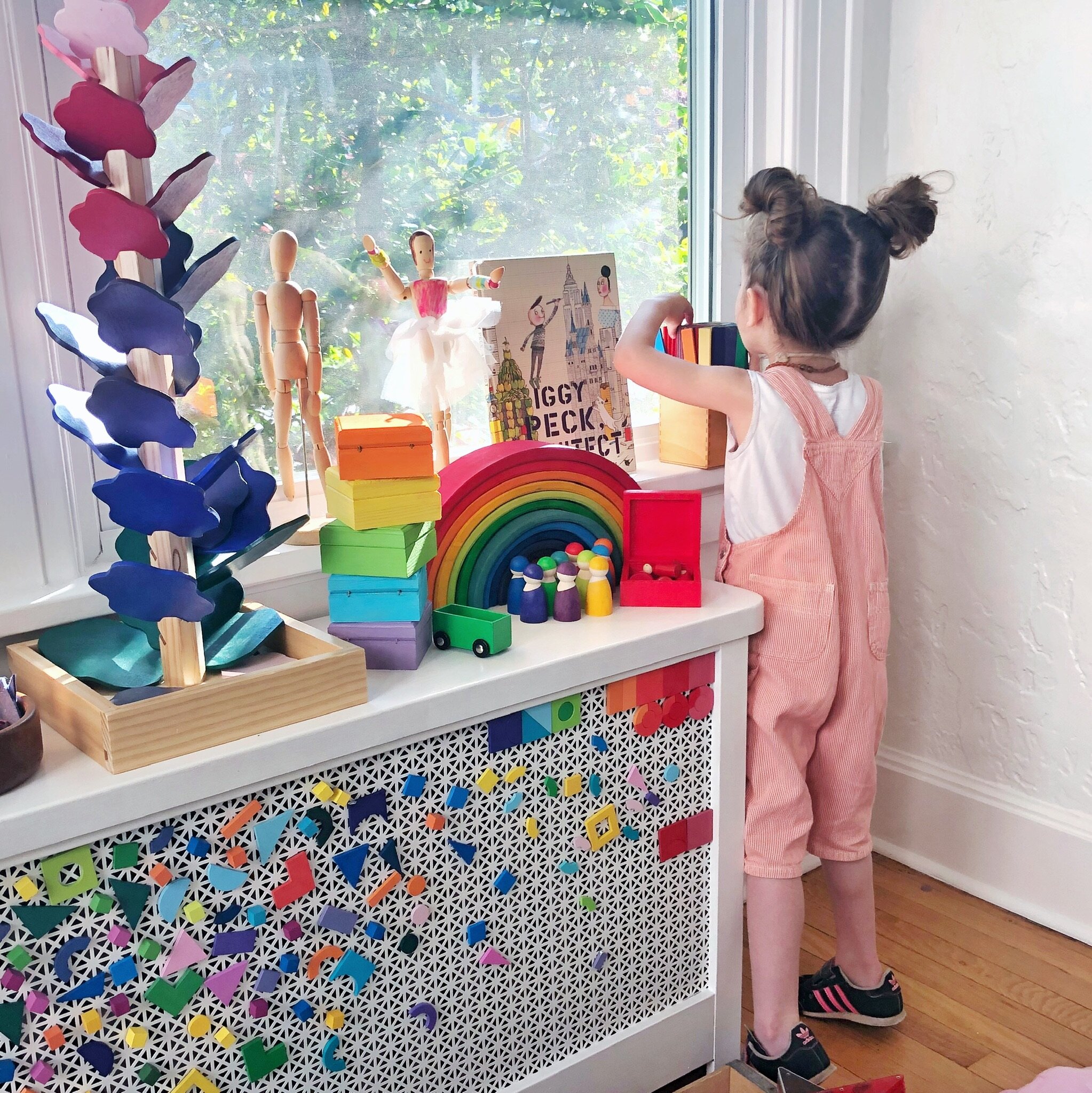Creating Play Spaces: A Guide to Encouraging Independent Play at Home
/Do you wish your child would play independently, but you’re not sure where to start?
Let’s talk about play areas in your home:
Instead of considering your child’s play area as an aesthetic showroom for their toys, think about it as a container for their play experiences.
We’ve all been a little bit brainwashed by the beige playroom aesthetic on social. I love that parents are thinking about play spaces, but I don’t love the pressure to have your playroom look a certain way.
If you want your kids to love playing (and independent play), there are a few things you should know.
Play is not supposed to look a certain way. The definition of play is to engage in an activity for enjoyment and recreation rather than a serious or practical purpose.
We can all take a deep breath. Nowhere in this definition is there speak of fancy playrooms, wooden toys, or sensory bins.
When you think about your child’s play area, think about who they are as an individual.
Who is my child?
If you have a child who loves to sing, dance, and perform, remove the giant train table to make more room for dancing! Add some play silks and remove the big Duplo they loved last year.
If you have a child who loves a big old plastic play kitchen and uses it consistently, don’t you dare get rid of it in the name of aesthetics!
Think about your specific child’s interests and match your play materials to that. You’ll see a drastic difference in how much and how often they play. If you’re feeling overwhelmed, keep in mind that you don’t have to clean out your whole playroom. Instead, pull the materials you know they’ll use into the forefront. Set the stage for play.
Ask Yourself:
Where does my child instinctively begin to play? That’s your clue to where you should set up for play.
Kids usually want to play where we are, so a big beautiful playroom on the third floor of your house won’t likely get used as much as a small nook in your kitchen. It doesn’t have to be cute, it just has to be functional. When my kids were small, much to the chagrin of my loving husband, I ditched the dining room table and turned that room into a play area for the kids. The dining room was off the kitchen where I was spending most of my time. This made it easy for me to drift in and out of their play. I could help keep them settled and anchored, and do what I needed to do. You don’t need an entirely separate room for your kids to play in. Try setting up a little play table in the corner of your kitchen and put a SIMPLE play prompt that reflects their interests. An example might be a puzzle that you know they love and can work on independently. Take it out of the box and put the first few pieces together. Don’t say anything. Let them find it. I bet you’ll turn around from the kitchen sink and see them puzzling away!
Pro Tip: Add a small container of art supplies into your child’s play area.
Give your child free access to pencils, paper, and tape, and watch their play go to the next level. I know what you’re thinking- no way! They’ll scribble on the walls!
Hear me out, if your child is around four and up, sit them down and say, “You are getting so good at playing, and I think you are ready to add some pencils paper, and tape to your play. What do you think?”
Let them talk and be excited.
Show them a small basket of just one or two pencils, some scrap paper and some masking tape.
Ask them what they think the rules should be regarding where we make marks and where we dont.
For example, “Is it okay to draw on your toys? No! But you can draw on this paper and tape it to your blocks.”
“Is it okay to draw on the walls? No! But you can make signs on this paper and hang them on the walls.”
Of course, they’ll make mistakes and need supervision. It’ll take practice. But when we give them these materials and teach them the rules, and trust the children, they almost always rise to the occasion. It is so worth it because adding materials like this always takes play to the next level.
Fostering independent play isn't about creating a picture-perfect space; it's about understanding your child's unique interests and developmental needs. By providing an environment that reflects their personality and encourages exploration, you empower them to engage deeply in play. This approach nurtures their independence and enriches their creative and cognitive skills.
Remember, the best play area is one that your child actually plays in. So, let go of the pressure to conform to trends, and embrace your child's play.
Check out some of our favorite art supplies to set up for kids
Have you tried our new Play Personality Quiz?











Rescuing them from discomfort also robs them of resilience.